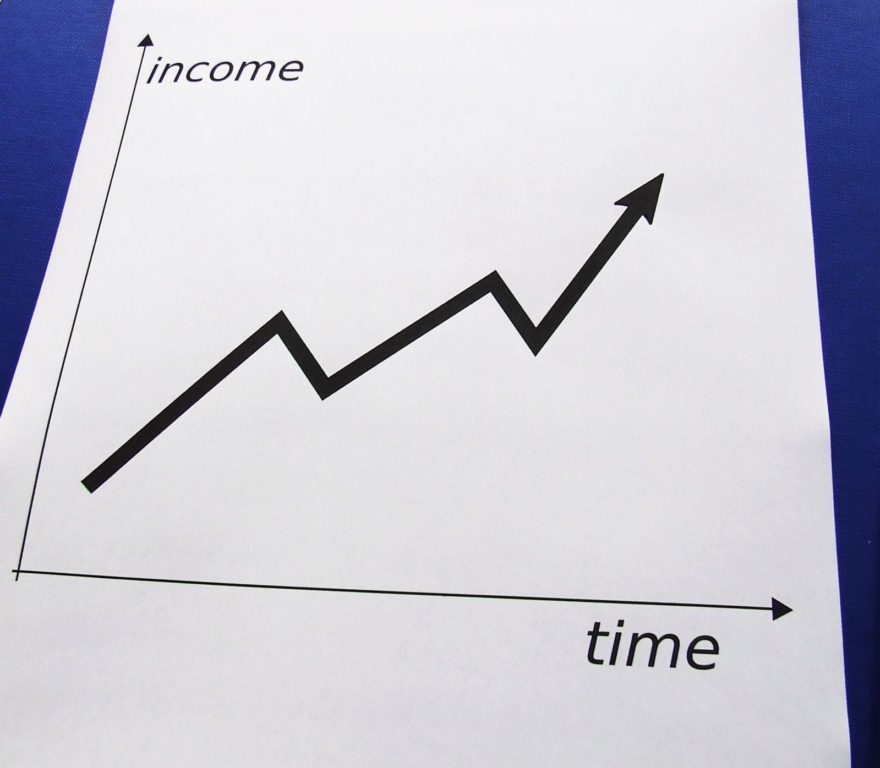It shouldn’t be difficult to give money away, but there are many ways we can help improve outcomes for families who have more than enough assets to last a lifetime. While estate planning is important, let’s make your money go further and have a greater impact by creating a giving plan for while you are alive.
If you are philanthropically inclined, have a favorite charity, or just want your children or grandchildren to benefit from your blessings, we can help you plan how to best distribute your money, minimize taxes, and safeguard your future. Here are seven tips to get started.
1) Put yourself first. It should go without saying that you should not give away a significant amount of your wealth if there is any question as to whether you have sufficient funds to last a lifetime. With increasing longevity and rising costs of healthcare, it is not difficult to burn through a million or two over a 25-year retirement.
We begin with a retirement analysis that includes your philanthropic goals, and evaluates the likelihood your funds will cover your lifetime. The more guaranteed sources of income you have – Social Security, Pensions, Annuities, etc. – the more we can distribute other capital without worries of loss of income. The purchase of an Annuity can give you the confidence to disburse cash during your lifetime without fear of market risk, sequence of returns, or longevity.
We generally do not recommend that retirees aim to impoverish themselves to qualify for Medicaid. States have a 60-month look-back period that determines if you have given away money. In some cases, Medicaid planning may make sense, but we prefer to plan for abundance.
2) Understand the Gift Tax Annual Exclusion. Each year, you can give $14,000 (2017) to any person under the gift tax exclusion. This is well known, but most people don’t understand that you do not necessarily have to pay a tax if you exceed this amount; rather you are required to file a gift tax return, and your gift (over $14,000) reduces your lifetime gift and estate tax exemption, currently $5.49 million per individual.
Although most estates will not exceed these levels, we do know that there are many politicians in Washington who want to lower the estate exemption. So it’s difficult to predict what the exemption will be in 10 or 20 years. The easiest approach is to stay under the $14,000 annual exclusion. Remember that a couple may, combined, give $28,000 to an individual or $56,000 to another couple, such as a daughter and son-in-law.
Additionally, there are medical and educational exceptions to the gift tax. You can pay college tuition or medical bills for anyone, and those amounts are not subject to a gift tax. The best approach is to pay those bills directly to the providers, and not write a check to the recipient, to avoid any implication of a gift.
3) Give now, rather than leave everything in your will. By making donations and gifts today, you can:
- receive a tax deduction for charitable giving. If you’re in the 28% tax bracket, giving $10,000 a year now could save you $2,800 on your taxes.
- see your gifts make a difference for your family, causes, and institutions immediately. Your gifts may be more helpful to your children today rather than when they are 55 or 65.
- discover how those monies will be spent, and learn who will be responsible with a large sum of money. Leaving a large inheritance through a will sometimes backfires, causing reckless spending. Starting a gifting program early may identify these issues and provide planning and education, or identify the need for trustees who can help ensure money is used prudently.
- avoid the fights, misunderstandings, and vastly expensive lawsuits that so frequently occur with large estates. Don’t cause future problems for your spouse or children by leaving them a mess or a distribution that creates anger and divisions. This is so common and yet most parents think it will never happen to their family.
4) Give appreciated securities to charity rather than cash. You can donate shares of stock, mutual funds, or other assets to charity and avoid paying capital gains tax on the gains on those investments. Besides avoiding capital gains, you also get to deduct the full value as a charitable donation, as eligible. The charity will sell the donated securities immediately, but not owe any taxes to Uncle Sam. It’s a great way to be more efficient in your charitable giving. It saves you taxes, which ultimately means you will have more money to donate and do good.
5) Leave money to charity through your IRA rather than through your will. If you leave a $500,000 IRA to an individual, they will owe income taxes on any distribution, which could eat up $200,000 of the account, or more, if you have state income taxes. If you leave the same IRA to a charity, they will pay no taxes on the account, and would receive the full $500,000 immediately.
Instead, leave a taxable brokerage account to your children; they will receive a step-up in cost basis on those investments and therefore will likely have little or no capital gains on the sale of those assets. Your kids will be so much better off receiving taxable assets rather than the same number of dollars from your IRA.
Change your mind? If you write a charity into your will, and later want to change the amount or name a different charity, you will have to get a whole new will. But if you use your IRA for your charitable bequests, all you have to do is update the IRA beneficiary form, which is quick and free.
6) 529 plan for Grandchildren. Want to help your grandchildren be successful in life, pursue their career goals, and not be saddled with crippling student loans? Consider 529 college savings plans, which will get assets out of your taxable estate and enable tax-free withdrawals for qualified higher educational expenses.
If one beneficiary does not need the account, you can change the beneficiary to another person. You can retain control of this money, while creating a legacy for the future success of your grandchildren, great-grandchildren, or beyond.
Given a choice of having money in a taxable account or a tax-free account, you’d probably prefer the tax-free option, so I am baffled why more wealthy grandparents are not using 529 plans. The younger your grandchildren are, the longer time you will receive tax-free growth. Start early.
7) Insurance. Retirees can protect their ability to fund their giving goals by purchasing long-term care insurance. This can help ensure they do not deplete their assets or have to choose between adequate care and fulfilling their other financial goals.
If you intend to leave $1 million to your alma mater, church, or other organization, it may make sense to purchase a permanent life insurance policy specifically for that goal. Then you can preserve your other assets for your spouse or children while guaranteeing your gift to that institution. Or you could do the reverse – give money annually to charity and leave life insurance to your children or a trust. Individuals receive life insurance proceeds tax-free.
We’ve only just scratched the surface of what is possible to enable you to most efficiently disburse your money and assets. There are a lot of pitfalls that could be avoided with rigorous planning. Many of these strategies will benefit you over a long period of time, which means you’d be smarter to start these at age 58 rather than 78. Don’t procrastinate! Living the Good Life means that abundance finds joy in seeing the benefits our giving can have on the world.












